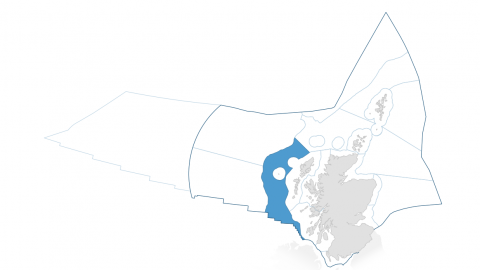The tables in this section reflect the output of the workshop (October 2019) when the pressures from human activities were assessed for the period 2014 to 2018 for the region. The summary text below the tables elaborates on some of the points that were made at the workshop.
This pressure assessment uses the FeAST classification which includes two abrasion pressures: surface abrasion & sub-surface abrasion. Some expert groups combined these as a single pressure "surface & sub-surface abrasion" whilst others focussed on using surface abrasion alone, hence there is a slight difference in handling for some regions.
The ranking of the pressures in terms of impact is a relative exercise within each region, and is not a statement of their absolute impact. Detailed comparison between regions on the basis of these relative pressure assessments is therefore not advisable.

Main pressures identified
| Priority [1] | Pressure (FeAST classification) [2] | Main healthy and biologically diverse components affected [3] | Main contributing FeAST activity /activities to pressure [4] | Associated productive assessments [5] |
|---|---|---|---|---|
| 1 | Removal of target species (including lethal) |
|
||
| 2 | Removal of non-target species (including lethal) |
|
||
| 3 | Surface abrasion |
|
||
| 4 | Sub-surface abrasion/penetration |
|
Other pressures identified
Footnote: the ordering of entries is alphabetical and there is no prioritisation between the pressures.
Summary from workshop
This region is heavily influenced by the north Atlantic Ocean, with waters west of the 300 m depth contour truly oceanic at all times. The region is important for minke whales, and other blue-ocean whale species, including migratory species. There is an extensive fishery along the continental slope to depth in excess of 1,000 m. The top four pressures identified in this region are therefore exclusively linked to commercial fishing: pressures on target and non-target species; and pressures on the seabed from bottom trawling and scallop dredging.
1 Removal of target species (lethal), and;
2 Removal of non-target species.
These two pressures relate to: bottom otter trawling and pair trawls; demersal seine netting; line fishing (mechanized longlining); trawling and purse seining; scallop dredging.
3 Surface abrasion: this is mainly linked to impacts associated with bottom otter trawling and pair trawls; demersal seine netting; scallop dredging;
4 Sub-surface abrasion: this is mainly linked to impacts associated with bottom otter trawling and pair trawls and scallop dredging.
In addition to these top four pressures, military and commercial cargo vessel activities are also noted (though ranked lower). These activities contribute to several pressures, namely: underwater noise (sonar and engine noise), visual disturbance, collision risk and synthetic compound contamination risks.

